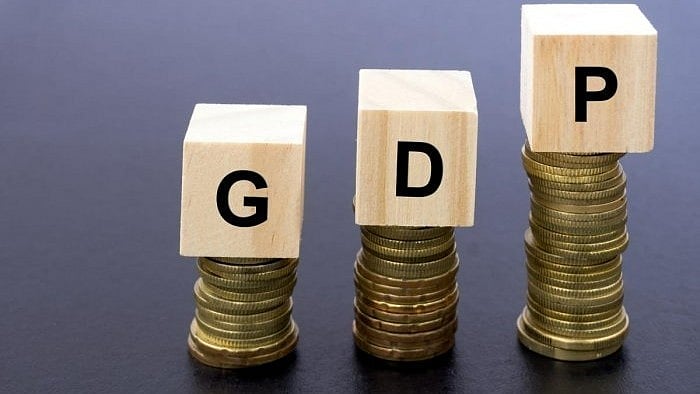
Representative image of GDP.
Credit: iStock Photo
New Delhi: India’s economic growth is likely to decline to 6.6 per cent in calendar year 2025 from 6.9 per cent estimated in 2024, as per the World Economic Situation and Prospects report released by the United Nations on Thursday.
The country’s gross domestic product (GDP) growth has been pegged at 6.7 per cent for 2026. This will be the three consecutive years of sub-seven percent growth after a robust recovery in the post-Covid pandemic year. GDP growth stood at 8 per cent in 2023 calendar year.
Nagesh Kumar, Former Director, United Nations Economic and Social Commission of Asia and the Pacific (UNESCAP), said India recorded high GDP growth in the past three years due to pent-up demand following the Covid slump. “Now we are back to the pre-Covid trend,” he said.
India’s GDP growth slumped to a 7-quarter low of 5.4 per cent in July-September 2024 period dragged by poor manufacturing activities, as per the latest official data. “The 5.4 per cent growth was completely unexpected,” said Kumar, who is also a member of the Monetary Policy Committee of the Reserve Bank of India (RBI).
He added that slow private investment has been one of the reasons for the sluggishness in economic growth. “Private investment has been hesitant. Interest rate could be one of the reasons.”
As per data released by the National Statistics Office (NSO) earlier this week, India’s GDP growth is projected to slow to 6.4 per cent in the financial year ending March 2025 from 8.2 per cent recorded in the previous financial year
While the NSO data is for the financial year that runs from April to March, the World Economic Situation and Prospects report data covers the calendar year.
On the financial year estimate, Kumar said the growth is likely to improve in the second half, taking the overall expansion for 2024-25 to around 6.5 per cent. Despite the deceleration, India would continue to remain the fastest growing major economy in the world.
The UN’s flagship economic report has pegged the global growth at 2.8 per cent in 2025, unchanged from 2024. It noted that lower inflation and ongoing monetary easing in many economies could provide a modest boost to global economic activity in 2025.
However, uncertainty still looms large, with risks stemming from geopolitical conflicts, rising trade tensions and elevated borrowing costs in many parts of the world.
These challenges are particularly acute for low income and vulnerable countries, where sub-par and fragile growth threatens to further undermine progress towards the Sustainable Development Goals (SDGs).